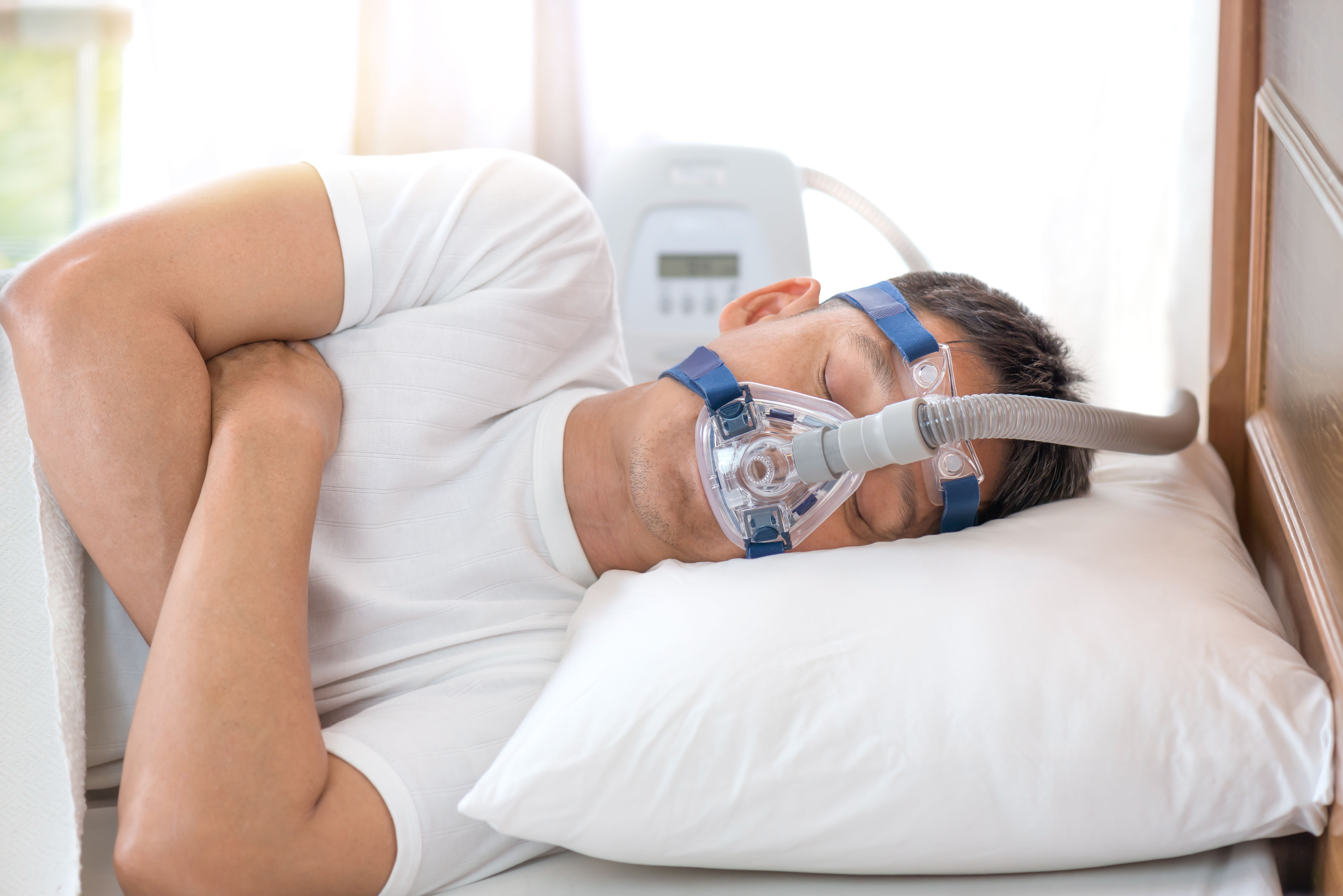News
Article
Nasal Spray Alleviates Severity of Obstructive Sleep Apnea, Study Finds
Author(s):
A small, double-blind study has revealed the promise of the BAY2586116 nasal spray to help manage severe forms of obstructive sleep apnea and lower an individual’s morning blood pressure.
The BAY2586116 nasal spray has potential to lower the severity of obstructive sleep apnea (OSA) and next-day blood pressure in individuals who exhibit responses in upper airway collapsibility, according to a study recently published in American Journal of Physiology Heart and Circulatory Physiology.
Individuals affected by OSA have a collapsible or narrow upper airway, and the severity of this feature is highly variable from person to person. Essentially, OSA occurs due to deficiencies in dilator muscle function alongside impairments to pharyngeal anatomy while someone is sleeping; however, other nonanatomical, physiological impairments can contribute to this condition. As the present authors note, an estimated 70% of those affected by OSA also endure instability in ventilatory respiratory control, low thresholds for respiratory arousal, and dysfunctional upper airway dilator muscle response during sleep. With a myriad of factors affecting an individual’s OSA, identifying these traits could be valuable for predicting patient responses to treatments and informing potential therapeutic targets.
Man sleeping with CPAP mask for sleep apnea | Image credit: sbw19 - stock.adobe.com

The authors previously conducted preclinical studies to evaluate the influence of topically applying BAY2586116—a TASK-1– and -3–specific potassium channel antagonist—on upper airway collapsibility and activation of pharyngeal muscles. Their results indicated that BAY2586116 was well tolerated and safe, and contributed to improvements in upper airway collapsibility that lasted hours. However, questions still remain regarding if observed changes in upper airway physiology clinically reduce the severity of participants’ OSA. Therefore, the present study primarily aimed to assess the impact of BAY2586116 nasal spray vs placebo on OSA severity and evaluate the responses of participants who had improvements with airway collapsibility (> 2 cmH2O reduction in critical closing pressure [Pcrit], Pcrit responders) against those who did not (< 2 cmH2O reduction in Pcrit, Pcrit nonresponders), and test responses when breathing was unrestricted compared with nasal only. Apnea-hypopnea index (AHI) rates were also assessed as a measure of OSA severity.
Ten participants with OSA were included, each having already completed a physiological upper airway study with BAY2586116. They participated in 3 polysomnographic overnight sleep studies, each around 1 week apart, and received either 160 mcg of nasal spray or placebo. Treatment was blinded.
The researchers noted that, on average, the participants had severe forms of OSA, were obese, did not have insomnia, and were not overly sleepy. No severe adverse events related to BAY2586116 were reported. In the unrestricted breathing group receiving BAY2586116, morning systolic (P = .017) and diastolic (P = 0.45) blood pressures were significantly reduced compared with the placebo group.
In total, 70% of the participants exhibited reduced AHI with 3% oxygen desaturation (AHI3) with BAY2586116 vs placebo (unrestricted breathing); however, the authors noted that the overall AHI3 differences between the groups were not significant. Additionally, the total (P = .04) and non–rapid eye movement (NREM; P = .03) oxygen saturation levels were significantly higher for those administered BAY2586116. Parameters for sleep such as sleep onset latency, total sleep time, arousal index, sleep architecture, and sleep efficiency were not significantly different between groups.
In the Pcrit responder group, a 22% reduction in AHI3 was observed with BAY2586116 compared with placebo; no changes were seen in the Pcrit nonresponder group. Pcrit responders also showed substantial reductions, 22% to 46%, with BAY2586116 in measures such as REM AHI3 (P = .4), NREM AHI with 4% index (AHI4; P = .03), AHI4 (P = .03), oxygen desaturation index 3% (ODI3; P = .04), ODI 4% (ODI4; P = .04), NREM ODI3 (P = .01), and NREM ODI4 (P = .04).
Furthermore, for Pcrit responders who received BAY25861116 compared with placebo, there was a 26% NREM reduction (85% vs 63% min/h; P = .04), a 28% REM hypoxic burden reduction (78% vs 56% min/h; P = .02), a 23% decrease in hypopnea index (unrestricted breathing arm, 28 vs 21 events/h; P = .04), and a 1.3% average increase in sleep oxygen saturation (unrestricted breathing arm, P = .004).
"The main findings of this study are that sensitization of upper airway mechanoreceptors with topical application of a novel TASK 1/3 channel antagonist translates to modest improvements of 25% to 45% in markers of OSA severity, including the AHI and measures of hypoxemia during sleep in selected people who have a >2 cmH2O improvement in upper airway collapsibility with BAY2586116,” the authors wrote.
In their conclusion, they noted the observed reductions in morning diastolic and systolic blood pressures that may partially be attributed to increased sleep duration. Moving forward, these findings will need to be investigated further in larger cohorts to solidify the current results and the efficacy of the BAY2586116 nasal spray for managing varying severities of OSA.
Reference
Osman AM, Toson B, Naik GR, et al. A novel TASK channel antagonist nasal spray reduces sleep apnea severity in physiological responders: a randomized, blinded, trial. Am J Physiol Heart Circ Physiol. 2024;326(3):H715-H723. doi:10.1152/ajpheart.00541.2023





